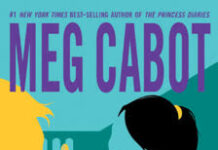In the labyrinthine world of crime fiction, few voices resonate with as much grit and nuance as Jo Nesbø’s. With his latest offering, Phantom, Nesbø invites readers once again into the shadowy corners of Oslo’s underbelly, weaving a tale that is as complex as it is compelling. This review aims to unravel the layers of Phantom, exploring the intricate character advancement, the relentless suspense, and the motifs that give Nesbø’s narrative its haunting power-without giving away the twists that keep pages turning. Whether you are a longtime fan or a newcomer to Nesbø’s work, this thoughtful examination seeks to illuminate the depths of Phantom‘s dark allure.
unraveling the Complex Web of Mystery and Suspense That Drives the Narrative Forward in Phantom
At the heart of Jo Nesbø’s Phantom lies a labyrinthine plot that expertly intertwines intricate clues and unexpected twists, ensuring that readers remain perpetually on the edge of their seats. Nesbø’s command over pacing-balancing moments of rapid tension with brief respites-creates a narrative rhythm that mirrors the protagonist’s own psychological turmoil.This compelling tension is amplified by the author’s deft use of misdirection, leading the reader through a series of revelations that challenge assumptions and deepen the enigma at the story’s core.
Several key elements contribute to the dense atmosphere of mystery and suspense found throughout the novel:
- Unreliable Narratives: Characters whose motivations remain obscured, prompting readers to question every interaction.
- Layered Character Backstories: Personal histories that intertwine with the central mystery, adding emotional depth.
- Symbolic Imagery: Recurring motifs that hint at hidden truths without revealing too much too soon.
these components coalesce to form a narrative tapestry where every detail is charged with importance, inviting careful analysis and rewarding attentive readers.The precision with which Nesbø constructs the story not only maintains suspense but also enriches the overall thematic exploration of identity,loss,and redemption.
| Element | Impact on Narrative | Example |
|---|---|---|
| Unreliable Narratives | Creates doubt and intrigue | Protagonist’s conflicting memories |
| Layered Backstories | Adds emotional resonance | Revealed past trauma shaping choices |
| Symbolic Imagery | Foreshadows key plot points | Recurring shadow motifs |
Exploring the Psychological Depths of Harry Hole and His Struggle with Inner Demons
Jo Nesbø masterfully crafts a protagonist whose psychological landscape is as turbulent as the crimes he investigates. Harry Hole’s internal conflicts are not merely plot devices but integral components that shape every decision he makes. Beneath his resolute exterior lies a labyrinth of doubts,guilt,and unresolved trauma,which Nesbø peels back layer by layer with unflinching honesty.This raw vulnerability lends Hole an undeniable complexity-he is simultaneously flawed and relentless, a detective haunted by what he chooses to suppress rather than confront.
The novel deftly explores the duality that defines Hole’s existence through vibrant narrative elements:
- Struggles with addiction: A portrayal that humanizes his weaknesses, showing how past pain manifests in self-destructive behavior.
- Moral ambiguities: Choices that challenge conventional heroism, reflecting the gray areas of justice and personal redemption.
- Isolation and connection: His simultaneous craving for intimacy and fear of vulnerability, which fuels his relentless solitude.
| Inner Demon | Manifestation | Impact on Character |
|---|---|---|
| Trauma | recurring nightmares and flashbacks | Heightened sensitivity and impulsiveness |
| Addiction | Alcohol dependence | Erodes trust, compromises decisions |
| Isolation | Self-imposed detachment from loved ones | Intensifies loneliness, fuels obsession |
Through these facets, Harry Hole emerges not just as a detective solving crimes but as a figure wrestling with very human battles. Nesbø invites readers to witness this internal combat, crafting a narrative where psychological depth is as essential as the unfolding mystery itself.
How Jo Nesbø Crafts a Chilling Atmosphere That Keeps Readers Captivated from Start to Finish
Jo Nesbø’s mastery lies in his meticulous attention to detail, which transforms ordinary settings into claustrophobic landscapes teeming with unease. His vivid descriptions evoke a palpable sense of cold, darkness, and isolation that cloak every page like a shroud. The pacing oscillates between tense stillness and sudden bursts of action, creating a rhythm that mirrors the heartbeat of a thriller on the edge. nesbø employs sensory immersion-how the biting cold cuts through clothing, the echo of footsteps in empty corridors, the flicker of dim lighting-to envelop readers in an atmosphere thick with anticipation and dread.
Several narrative techniques work in tandem to sustain this immersive surroundings:
- Layered perspectives that reveal secrets piece by piece, fostering suspense.
- Ambiguous morality where heroes and villains blur, deepening psychological tension.
- Strategic use of silence and pauses between dialog to heighten discomfort.
- juxtaposition of the mundane and the sinister, making the familiar feel threatening.
| element | Effect on Atmosphere | Example in Phantom |
|---|---|---|
| Weather Description | Enhances bleakness and isolation | Endless snowy nights reflect emotional coldness |
| Internal Monologues | Builds psychological depth | Hrush’s conflicted thoughts reveal inner turmoil |
| urban Setting | Creates claustrophobia and unpredictability | Dark alleys and abandoned buildings convey menace |
The Role of Urban Oslo as a Moody Backdrop Enhancing the Dark Themes and Tense Plotlines
Oslo in Phantom is not just a setting but a living, breathing entity that mirrors the protagonist’s turmoil.The city’s often bleak, rain-soaked streets and muted winter light cultivate an atmosphere thick with unease, where every shadow seems to conceal a threat. This moody urban landscape amplifies the novel’s exploration of moral ambiguity and internal conflict, making the environment integral to the story’s emotional impact. The contrast between serene fjord views and the gritty underbelly of the city highlights the duality of human nature woven into nesbø’s plot.
Several elements of Oslo’s cityscape play crucial roles in enriching key scenes:
- Neon-lit alleys that heighten suspense and symbolize hidden dangers
- Desolate parks and waterfronts that evoke isolation amidst urban hustle
- Snow-softened rooftops that introduce a cold, almost ghostly stillness paralleling the protagonist’s isolation
This thoughtful integration of setting and narrative tension elevates the novel beyond a typical thriller. Oslo’s chiaroscuro tones serve both as metaphor and moodboard, weaving darkness into each twist and character revelation.
| Urban Feature | Symbolic Role | Emotional Tone |
|---|---|---|
| Foggy Harbor | Mystery & concealment | ambiguity |
| Abandoned Warehouses | Isolation & danger | tension |
| City Squares at Dusk | Conflict & confrontation | Unease |
Examining the Intricacies of Supporting characters and Their Impact on the Story’s Progression
In Phantom, supporting characters are far from mere background figures-they emerge as crucial cogs in the intricate machinery of Nesbø’s plot. Each ally, adversary, or ambiguous figure contributes layers of complexity that challenge the protagonist’s journey, pushing the narrative into unexpected and thrilling territories. Their motives frequently enough blur the lines between freind and foe, offering a nuanced exploration of trust and betrayal. Anne and Tom Waaler, as an example, are more than side notes; their presence injects emotional tension and moral ambiguity into Harry Hole’s quest, making the reader question allegiances at every turn.
- Anne Waaler: A mirror reflecting Harry’s vulnerabilities, her actions spark pivotal turning points.
- Tom Waaler: The embodiment of shadowy influence, complicates the landscape with political and personal stakes.
- Kaja Solness: Adds emotional resonance and grounds the story’s darker elements in human connection.
The careful crafting of these characters is reflected not only in their interactions but also in how they shape the protagonist’s evolution. The dynamic between leads and support creates a layered storytelling experience, where the plot’s progression hinges on these secondary threads. The following table illustrates the balance between character impact and narrative momentum, highlighting how each figure fuels critical plot shifts without overshadowing the central arc.
| Supporting Character | Role in Plot | Impact Level |
|---|---|---|
| Anne Waaler | Emotional Catalyst | High |
| tom Waaler | antagonistic Force | High |
| Kaja Solness | Moral anchor | Medium |
| Detective Bjarne Møller | Supporting Investigator | Medium |
A Closer Look at the Twists and Turns That Challenge Reader Expectations Throughout the Novel
Jo Nesbø masterfully crafts a narrative landscape where every revelation feels both surprising and certain. The novel constantly plays with the reader’s assumptions, weaving a delicate web where trust is a scarce commodity. Just when you believe you’ve unraveled the key mystery, Nesbø flips the script, challenging you to reconsider everything. Notable moments include:
- Unreliable memories that blur the line between truth and deception
- Shadows of the past influencing present motives in unexpected ways
- Characters whose alliances shift like the Oslo weather, keeping loyalties uncertain
Such intricacies not only deepen the plot but enrich the emotional landscape. The subtle interplay between character secrets and plot twists is captured vividly in the following breakdown:
| Plot Element | Impact on Reader | Revelation Timing |
|---|---|---|
| Ghosts from the past | Heightened suspense | Mid-novel |
| Unexpected alliances | Surprise and re-evaluation | Late chapters |
| Betrayal within trust | Emotional shock | climactic crescendo |
Themes of Redemption and Morality Interwoven with Gripping Crime Elements in Phantom
Jo Nesbø masterfully navigates the complex terrain where redemption and morality intersect with the gritty undercurrents of crime in Phantom. The protagonist, Harry Hole, is not simply a detective chasing shadows but a man wrestling with his own tormented past. Throughout the narrative, Nesbø presents morality as a gray canvas-each decision Harry makes teeters between justice and self-preservation, forcing readers to question: can true redemption ever be achieved in a world steeped in darkness? This exploration is heightened by the unforgiving Oslo streets, where every alleyway conceals more than just criminals-it hides fragments of human fallibility and hope.
The novel’s structure cleverly amplifies these themes by intertwining the crime elements with Harry’s personal journey. Consider the following elements that give Phantom its haunting depth:
- Haunted protagonist: Harry’s internal battles echo the external chaos, with his need for redemption driving the narrative.
- Ethical ambiguity: Interrogations and confrontations reveal that right and wrong are often subjective shades rather than absolutes.
- interlinked past and present: As Harry hunts a killer, he’s also forced to confront his own ghosts, blurring professional and personal lines.
| Theme | Manifestation in Novel | Impact on Story |
|---|---|---|
| Redemption | Harry’s struggle to atone for past choices | Humanizes the detective, adds emotional weight |
| Morality | Nuanced view of justice vs. vengeance | Challenges readers’ ethical perceptions |
| Crime | Examination into dark underworld | Provides gripping tension and suspense |
The Balance Between Action-Packed Scenes and Thoughtful Character Development in Nesbø’s Writing
Jo Nesbø masterfully intertwines heart-pounding action sequences with deep dives into the psyche of his characters, creating a reading experience that is as relentless as it is indeed introspective. In Phantom, the tension is palpable-not only through meticulously crafted chase scenes and gritty confrontations but also in the quite moments where Harry hole wrestles with his own demons. This balance ensures the pacing never falters; the reader is constantly propelled forward whilst simultaneously invited to pause and breathe in the complexity of human emotions at play.
What sets Nesbø apart is his commitment to fleshing out multi-dimensional characters beneath the veneer of a conventional thriller. Consider the way Harry Hole’s vulnerabilities are laid bare alongside his relentless pursuit of justice, creating a protagonist who is as flawed as he is compelling. These moments of character-driven storytelling are punctuated by explosive plot developments that reignite suspense. The following table captures the core elements that Nesbø juggles to sustain this delicate equilibrium:
| Aspect | Effect |
|---|---|
| High-stakes action | Maintains adrenaline and momentum |
| Psychological introspection | Enhances depth and emotional connection |
| Complex relationships | Drives character evolution |
| Plot twists | Renew reader engagement |
Comparisons with Previous Works by Jo Nesbø and What Phantom Brings New to the Table
In comparison to Jo Nesbø’s earlier works, particularly the gripping installments of the Harry Hole series, Phantom steps into a slightly different narrative rhythm.While the intricate layering of suspense and complex character studies remain a hallmark, this novel shifts focus toward a more introspective journey. Unlike previous thrillers that predominantly center on external criminal puzzles, Phantom delves into the protagonist’s internal conflicts with a subtle psychological depth. Nesbø’s signature dark atmosphere and stark oslo settings persist, yet there’s a newfound vulnerability that challenges readers to engage beyond the plot’s twists. This evolution highlights nesbø’s maturity as a storyteller,blending the detective thriller with almost existential undertones.
- enhanced character introspection: More time is given to exploring motivations and mental states.
- Tightened pacing: Faster in some segments, but balanced with thoughtful pauses.
- Innovative narrative techniques: uses flashbacks and unreliable narration to heighten tension.
What Phantom notably introduces is a fresh, layered emotional texture that hasn’t been as pronounced in Nesbø’s previous works. The novel’s exploration of memory and identity, intertwined with crime, pushes the boundaries of the traditional Nordic noir formula. Below is a concise comparison that encapsulates these core differences:
| Aspect | Previous Nesbø Works | Phantom |
|---|---|---|
| Focus | Crime investigation and external suspense | Internal struggles and psychological depth |
| Character Development | Primarily plot-driven | Emotionally nuanced and complex |
| Narrative Style | Linear with occasional flashbacks | Non-linear with unreliable narration |
| Thematic Elements | Justice, corruption, and violence | Memory, identity, and existential questions |
Why Phantom is essential Reading for Fans of Nordic Noir and Psychological Thrillers Alike
Phantom transcends typical genre boundaries by weaving a narrative that is as cerebral as it is gripping. Jo Nesbø’s mastery lies in his ability to merge the brooding atmospheres of Nordic Noir with the unnerving introspection of psychological thrillers. The novel’s protagonist, Harry Hole, plunges into a labyrinth of secrets and moral ambiguity that resonates deeply with readers who appreciate complex characters and intricate plots. Each chapter peels back layers not only of the mystery at hand but also of human frailty, painting a vivid portrait of tension, distrust, and the lingering shadows of trauma.
What sets this novel apart is its precise balance between atmospheric tension and character-driven suspense. Readers will find themselves engrossed in:
- The icy, immersive setting that amplifies the novel’s chilling mood
- The nuanced exploration of Harry’s personal struggles, adding depth beyond the crime
- Carefully crafted plot twists that challenge expectations without resorting to gimmicks
These elements combine to create a reading experience that satisfies both the desire for thrilling, edge-of-your-seat moments and the craving for profound psychological insight-making Phantom an indispensable title for aficionados of both genres.
Suggestions for Readers Who Appreciate Complex crime Fiction and Intricate Plot Structures
For those who revel in narratives that weave complexity into every chapter, Phantom offers a labyrinthine journey that challenges and captivates. Nesbø’s deft manipulation of multiple timelines and perspectives invites readers to piece together a puzzle where every detail matters. The novel demands a careful, attentive reading, rewarding patience with rich character development and surprising revelations that transcend typical crime fiction tropes.
To deepen your engagement with tales of intricate plotting, consider exploring works that mirror this narrative depth.Here’s a concise guide to authors and novels that share that intricate DNA:
- Don Winslow – The Cartel: A sprawling crime saga with layered narrative threads.
- Gillian Flynn – Sharp Objects: Psychological suspense entwined with dark family secrets.
- Tana french – In the Woods: Complex character studies set against enigmatic mysteries.
- Stieg Larsson – The Girl with the dragon Tattoo: multi-layered conspiracies and intricate character dynamics.
| Author | Recommended Title | What makes It Intricate? |
|---|---|---|
| Don Winslow | The Cartel | Expansive plot with multiple factions and timelines |
| Gillian Flynn | Sharp Objects | Psychological layers and unreliable narration |
| Tana French | In the Woods | Deep character introspection wrapped around mystery |
| Stieg Larsson | The Girl with the Dragon Tattoo | Interwoven conspiracies and complex protagonists |
The Narrative Techniques Jo nesbø Employs to Sustain Suspense and Emotional Engagement
Jo Nesbø masterfully constructs his narrative by interweaving multiple perspectives, which creates a tapestry of suspense that pulls the reader deeper into the labyrinth of Phantom. This technique not only reveals the plot from varying angles but also builds tension as readers piece together clues scattered across different storylines. By strategically withholding critical facts, Nesbø ensures that every revelation feels earned, amplifying emotional stakes.His use of concise,sharp dialogues combined with vivid yet restrained descriptions keeps the pace brisk while maintaining atmospheric depth,making it easy for readers to visualize the chilling world without losing footing in the complex tale.
Emotional engagement is heightened through the nuanced exploration of protagonist Harry Hole’s internal conflicts. Nesbø employs a delicate balance of introspective passages and high-action sequences, allowing readers to connect with Harry’s vulnerabilities amid the chaos. The recurring motif of shadows, both literal and psychological, serves as a constant reminder of the unresolved darkness within the characters. Consider the table below highlighting key narrative techniques and their emotional impact:
| Technique | Effect on Suspense | Emotional Impact |
|---|---|---|
| Multiple Perspectives | Builds complexity and uncertainty | Deepens empathy for varied characters |
| Information Withholding | Creates anticipation and surprise | Enhances reader investment |
| Symbolic Motifs | Reinforces thematic tension | Invokes psychological reflection |
| Balancing Action & Introspection | Maintains narrative momentum | Humanizes protagonist’s struggles |
About Jo Nesbø The Mastermind Behind the dark and Gripping World of Phantom
Jo Nesbø is not just an author; he is a craftsman of intricate narratives that explore the darkest corners of the human psyche. With Phantom, he continues to carve out a literary universe where suspense and moral ambiguity intertwine seamlessly. Known for his gripping storytelling, Nesbø masterfully combines complex characters with layered plots that keep readers both captivated and contemplative. His unique ability to delve into the shadows of society while maintaining an unrelenting pace allows the story to unfold with an almost cinematic intensity.
Several elements distinguish Nesbø’s approach, making his work resonate beyond typical crime fiction:
- Deep Psychological Insight: Characters are richly developed, embodying internal conflicts that mirror the chaotic world they inhabit.
- Atmospheric Settings: The bleak and brooding landscapes serve as more than just backdrops; they shape the narrative tension.
- Meticulous Plot Crafting: Every twist feels earned, with intricate clues woven carefully throughout the story.
| Aspect | Characteristic |
|---|---|
| Writing Style | Concise, evocative, and suspenseful |
| Themes | justice, betrayal, redemption |
| Signature Element | Unexpected twists with emotional depth |
In closing, Phantom weaves a complex tapestry of suspense and introspection, inviting readers to navigate the blurred lines between detective and ghost. Jo Nesbø’s mastery in crafting intricate characters and layered mysteries ensures that this installment resonates beyond the last page. Whether you find yourself captivated by its shadowy depths or contemplating its moral ambiguities, Phantom firmly secures its place within the modern crime thriller canon-offering a journey as thought-provoking as it is indeed thrilling.









